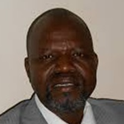International Journal of Information Technology and Computer Science (IJITCS)
IJITCS Vol. 13, No. 1, 8 Feb. 2021
Cover page and Table of Contents: PDF (size: 561KB)
Duration Estimation Models for Open Source Software Projects
Full Text (PDF, 561KB), PP.1-17
Views: 0 Downloads: 0
Author(s)
Index Terms
Data Repositories, Duration Estimation, Estimation Models, Open Source Software Project Estimation, Regression Models
Abstract
For software organizations that rely on Open Source Software (OSS) to develop customer solutions and products, it is essential to accurately estimate how long it will take to deliver the expected functionalities. While OSS is supported by government policies around the world, most of the research on software project estimation has focused on conventional projects with commercial licenses. OSS effort estimation is challenging since OSS participants do not record effort data in OSS repositories. However, OSS data repositories contain dates of the participants’ contributions and these can be used for duration estimation. This study analyses historical data on WordPress and Swift projects to estimate OSS project duration using either commits or lines of code (LOC) as the independent variable. This study proposes first an improved classification of contributors based on the number of active days for each contributor in the development period of a release. For the WordPress and Swift OSS projects environments the results indicate that duration estimation models using the number of commits as the independent variable perform better than those using LOC. The estimation model for full-time contributors gives an estimate of the total duration, while the models with part-time and occasional contributors lead to better estimates of projects duration with both for the commits data and the lines of data.
Cite This Paper
Donatien Koulla Moulla, Alain Abran, Kolyang, "Duration Estimation Models for Open Source Software Projects", International Journal of Information Technology and Computer Science(IJITCS), Vol.13, No.1, pp.1-17, 2021. DOI:10.5815/ijitcs.2021.01.01
Reference
[1]A. Ihara, A. Monden, K. Matsumoto, “Industry Questions About Open Source Software in Business: Research Directions and Potential Answers”, In Proc. the 6th Int. Workshop on Empirical Software Engineering in Practice (IWESEP), November 2014, pp.55-59.
[2]A. Boulanger, “Open-source versus proprietary software: Is one more reliable and secure than the other?”, IBM Systems Journal, 44(2): 239-248, 2005.
[3]B. Fitzgerald, “A Critical Look at Open Source”, IEEE Computer, 37(7): 92-94, 2004.
[4]J. Asundi, “The Need for Effort Estimation Models for Open Source Software Projects” In Proc. the 5th Workshop on Open Source Software Engineering, July 2005, pp.1-3.
[5]https://github.com/ten, [accessed on April 18, 2018].
[6]C. Abts, B. Clark, S. Devnani-Chulani, “COCOMO II Model Definition Manual”, University of Southern California, 1997.
[7]G. Mathew, T. Menzies, J. Hihn, “Impacts of bad ESP (early size predictions) on software effort estimation”, arXiv preprint arXiv:1612.03240, 2016.
[8]F. Qi, X. Y. Jing, X. Zhu, et al., “Software effort estimation based on open source projects: Case study of Github”, Information and Software Technology, 92: 145-157, 2017.
[9]E. Shihab, Y. Kamei, B. Adams, et al., “Is lines of code a good measure of effort in effort-aware models?”, Information and Software Technology, 55(11): 1981-1993, 2013.
[10]G. Robles, J. M. González-Barahona, C. Cervigón, A. Capiluppi, D. Izquierdo-Cortázar, “Estimating Development Effort in Free/Open Source Software Projects by Mining Software Repositories: A Case Study of OpenStack”, In Proc. the 11th Working Conference on Mining Software Repositories, May 31 –June 01 2014, pp.222-231.
[11]J. J. Amor, G. Robles, J. M. González-Barahona, “Effort estimation by characterizing developer activity”, In Proc. the International Workshop on Economics Driven Software Engineering Research, May 2006, pp.3-6.
[12]E. Kalliamvakou, G. Gousios, D. Spinellis, N. Pouloudi, “Measuring developer contribution from software repository data”, In Proc. the 4th Mediterranean Conference on Information Systems, September 2009.
[13]A. Capiluppi, D. Izquierdo-Cortazar, “Effort estimation of FLOSS projects: a study of the Linux kernel”, Journal of Empirical Software Engineering, 18(1): pp. 60-88, 2013.
[14]A. Mockus, R. Fielding, J. Herbsleb, “Two Case Studies of Open Source Software Development: Apache and Mozilla”, ACM Transactions on Software Engineering and Methodology - TOSEM, 11(3), pp. 309-346, 2002.
[15]S. Koch, “Profiling an Open Source ecology and its programmers”, Electronic Markets, 14 (2), pp.416-429, 2004.
[16]S. Koch, “Effort Modeling and Programmer Participation in Open Source Software Projects”, Information Economics and Policy, 20(4), pp.345-355, 2008.
[17]D. K. Moulla, Kolyang, “COCOMO model for software based on Open Source: Application to the adaptation of TRIADE to the university system”, International Journal on Computer Science and Engineering (IJCSE), Vol. 5(6), pp. 522-527, 2013.
[18]D. K. Moulla, I. Damakoa, Kolyang, “Application of Function Points to Software Based on Open Source: A Case Study”, In Proc. the Joint Conference of the International Workshop on Software Measurement and the International Conference on Software Process and Product Measurement (IWSM-MENSURA), October 2014, pp.191-195.
[19]B. W. Boehm, “Software Engineering Economics”, Prentice-Hall, New-Jersey, 1981.
[20]A. J. Albrecht, “Measuring application development productivity”, In Proc. the IBM Application Development Symposium, October, 1979, 83.
[21]A. J. Albrecht, J. E. Gaffney, “Software function, source lines of code, and development effort pre-diction: a software science validation”, IEEE Transactions on Software Engineering, 9 (6), pp. 639–648, 1983.
[22]J. Fernandez-Ramil, D. Izquierdo-Cortazar, and T. Mens, “What does it take to develop a million lines of Open Source code?”, In: Boldyreff C., Crowston K., Lundell B., Wasserman A.I. (eds) Open Source Ecosystems: Diverse Communities Interacting. OSS 2009. IFIP Advances in Information and Communication Technology, Springer, Berlin, Heidelberg, vol 299, pp. 170-184, 2009.
[23]L. Yu, “Indirectly predicting the maintenance effort of Open Source Software”, Journal of Software Maintenance and Evolution: Research and Practice, 18(5):311-332, 2006.
[24]P. Anbalagan, M. Vouk, “On predicting the time taken to correct bug reports in Open Source projects”, In Proc. the International Conference on Software Maintenance (ICSM), 2009, pp. 523-526.
[25]S. Chatterjee and A. S. Hadi, “Regression analysis by example”, John Wiley & Sons, 2015.
[26]M. Jorgensen, “Regression models of software development effort estimation accuracy and bias”, Empirical Software Engineering, vol. 9, pp. 297–314, 2004.
[27]D. C. Montgomery, E. A. Peck, G. G. Vining, “Introduction to Linear Regression Analysis”, 5th ed. Wiley, Hoboken, NJ. 2012.
[28]R. Silhavy, P. Silhavy, and Z. Prokopova, “Analysis and selection of a regression model for the Use Case Points method using a stepwise approach”, Journal of Systems and Software, vol. 125, pp.1-14, 2017.
[29]S. D. Conte, D. E. Dunsmore, V. Y. Shen, “Software Engineering Metrics and Models”, Redwood City, California: Benjamin-Cummings Publishing Company, Inc. ISBN:0-8053-2162-4, 1986.
[30]Novatis, Quels sont les CMS les plus utilisés en 2016 ? https://www.novatis.tn/quels-sont-les-cms-les-plus-utilises-en-2016/, 08/2016. [accessed on May 31, 2017].
[31]A. Abran, “Software Project Estimation: The Fundamentals for Providing High Quality Information to Decision Makers”, John Wiley & Sons Inc., Hoboken, New Jersey, 2015.


